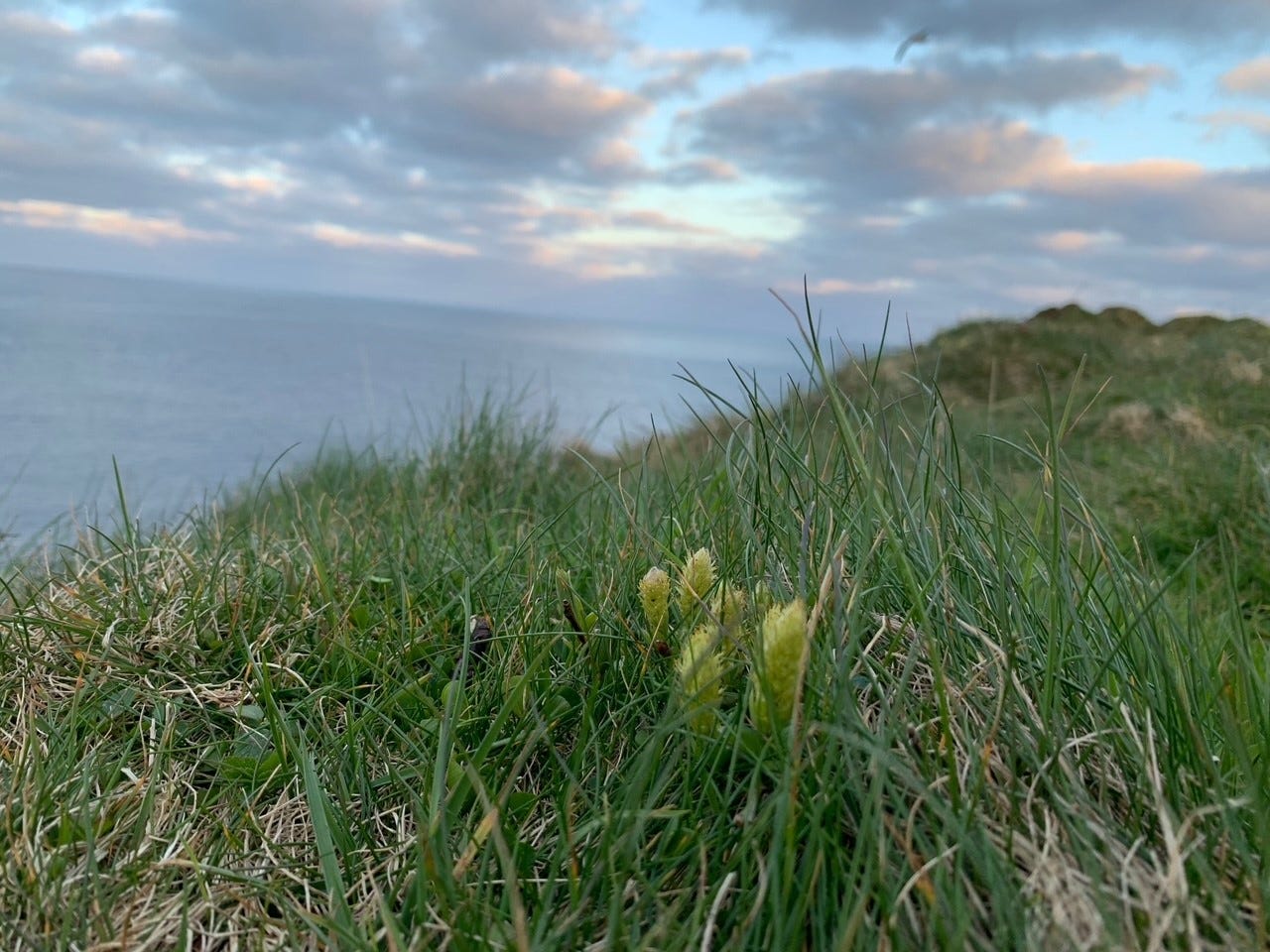When you can’t see the wood OR the trees?
Kirsty looks at the most amazing of miniture woodland environments
If there was one tree that symbolises the climate in Caithness then it’s the Creeping Willow. Closely followed by those ones that grow up straight to the height of a flagstone wall and then turn to grow at 90 degrees angle into the direction of the lee. But the Creeping Willow takes the prize in my book, any tree that grows prostrate enough to shelter beneath the heather has the Caithness weather cracked.
Imagine this, a forest full of ancient trees, a rich and mature ecosystem home to a plethora of creatures, yet only high enough to graze your ankle. You are a giant in this forest, looking down on the crowns of the trees. Creeping willow, (Salix repens) is the star of this small but perfectly formed woodland. It can grow as high as 1m where conditions allow, but on my evening clifftop walk at Duncansby Stacks it was only the catkins protruding above the heather and grasses that caught my eye. The cropped short ‘wind carpet’ flora of the clifftops is something beautiful to behold and an absolute joy to walk over, compared with the knee high sweat inducing sward in more sheltered locales.
The catkins are the flower of the willow tree, and in this species they appear in April and May making it a very important early food source for pollinating insects. Indeed a favourite for queen bees newly emerged from hibernation. They can bloom so early in fact that it can blossom before the leaves are making much of an appearance. The catkins are either male or female, with male flowers growing on one tree and female flowers on another. Technically that means they can be called 'dioecious' which is from the Greek meaning 'two households'. The male catkins appear yellow with pollen whilst the females have a greener or greyer look.


Once fertilised the seeds develop tiny fluffy appendages which allow them to be dispersed from the parent tree by the wind. Plenty of that on the Caithness clifftops, so another tick for our climate. Any that hang on despite the wind might be carried off by a breeding bird and become part of a soft nest lining. So - there we go - it is also providing some much needed warmth and protection from the coarsest of spring days on the Caithness cliff tops. The perfect match for our weather.
Willow background
There are in the region of 350 species of willow (or salix) worldwide, but it’s a transient figure as they can and do hybridise with each other. Common features of the salix family such as favouring wet land, the ability to quickly to colonise bare ground via wind dispersal and the super power of regenerating from a small twig pushed into the ground has made them a common sight. I would be amazed if humans had not been responsible for some of its spread post glaciation as a willow must’ve been a ‘one stop shop’ for neolithic man. It is a source of medicine (the salicylic acid in its bark being one of the fore runners to aspirin) has an easy to peel bark and pliable stems for basketry or binding and coppices readily for production of long straight poles.
The Creeping Willow is capable of turning the peculiarities of our local landscape to its advantage , so that it not only survives but thrives against the odds. The Creeping Willow does not just grow here; it belongs here, as do the stories and lessons we can learn from its quiet, enduring presence.
Kirsty Rosie is the High Life Highland Countryside Ranger for East Caithness and North East Sutherland, a region celebrated for its natural splendor and diverse wildlife. Raised in Keiss, her early experiences inspired her lifelong passion for the conservation in this area. Today, as a ranger, she is a well of knowledge and enjoys teaching visitors and communities alike about the treasures to be found on Caithness’s dramatic cliffs, and within it’ historic landscapes.









